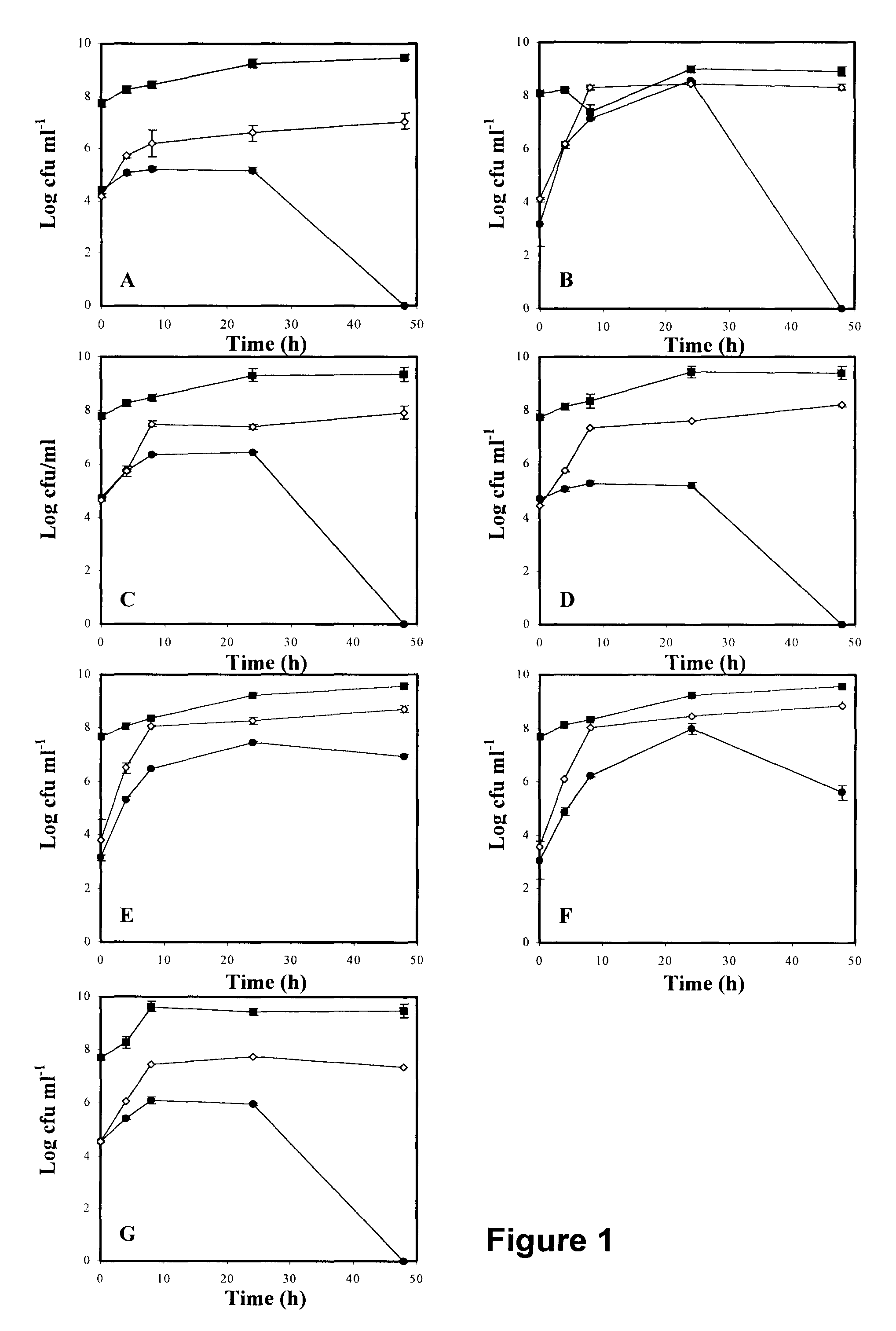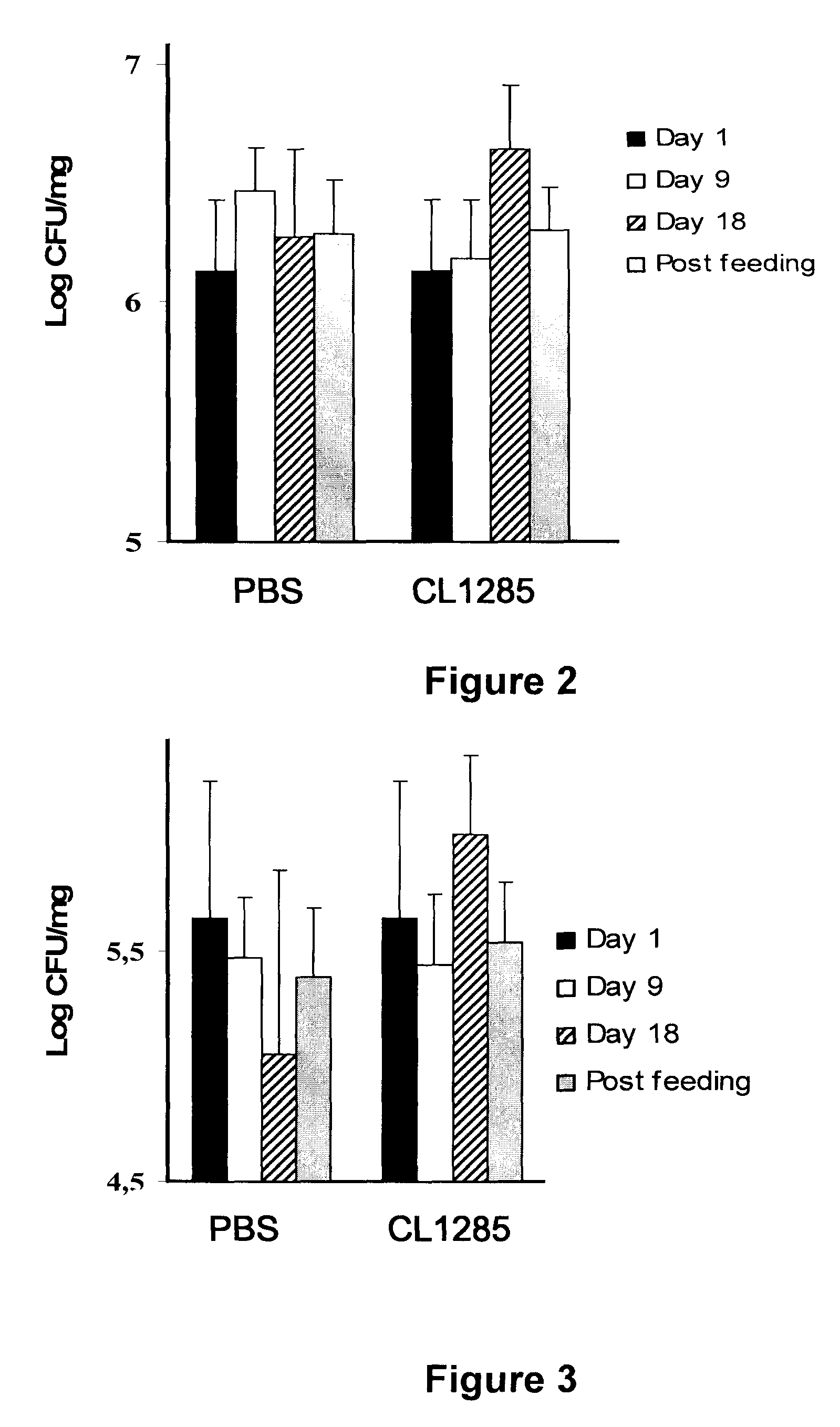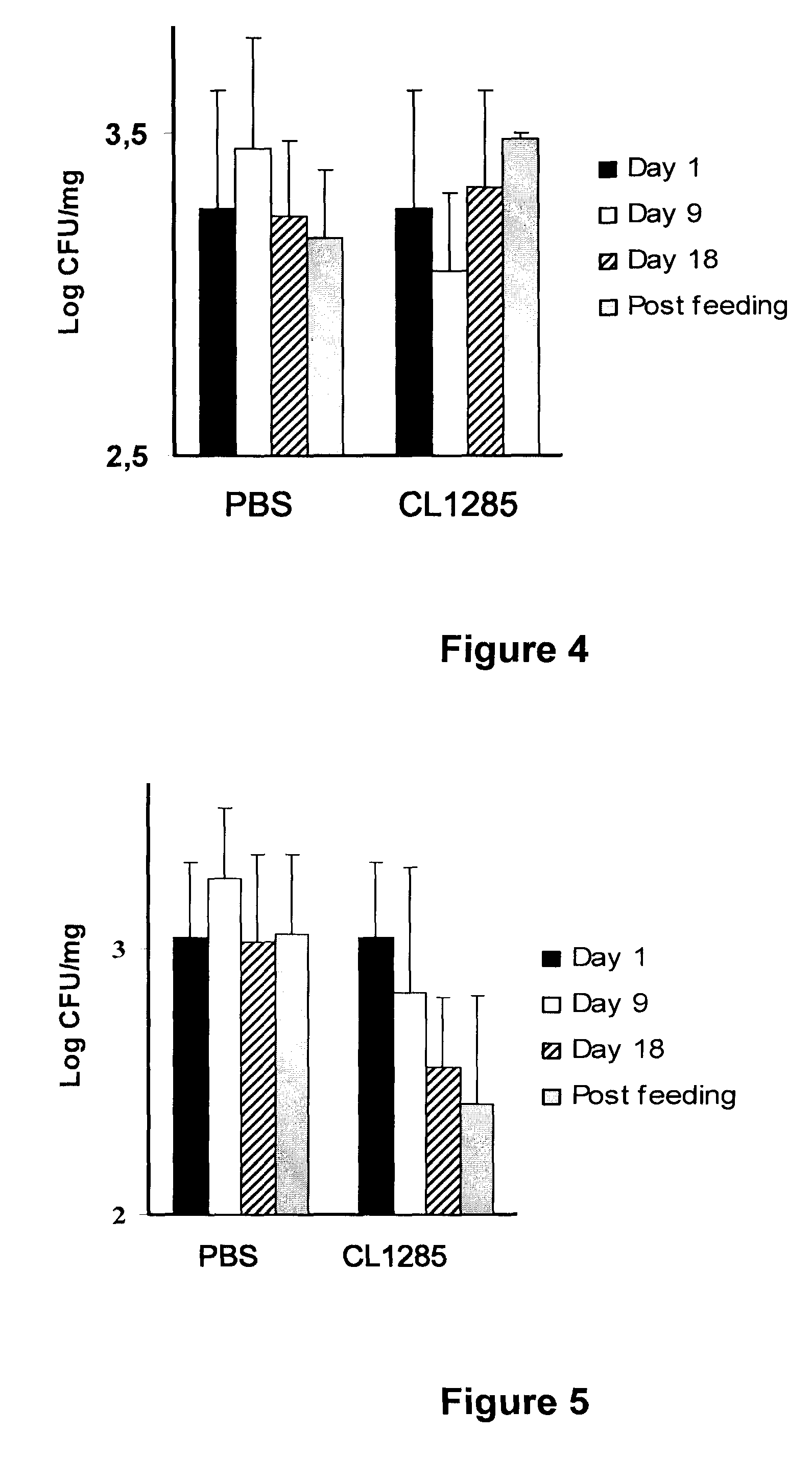Growth inhibition of microorganisms by lactic acid bacteria
a technology of lactic acid bacteria and growth inhibition, which is applied in the field of growth inhibition of microorganisms by lactic acid bacteria, can solve the problems of food-borne diseases, serious public health problems, and social and economic burdens, and achieve the effect of inhibiting spoilage of microorganisms
- Summary
- Abstract
- Description
- Claims
- Application Information
AI Technical Summary
Benefits of technology
Problems solved by technology
Method used
Image
Examples
example i
Delay of Pathogens Generation Time by Lactic Acid Bacteria Bacterial Strains
[0066]The probiotic strains Lactobacillus acidophilus and Lactobacillus casei (CL1285 mixture) were obtained from Bio-K+ International Inc. (Laval, QC, Canada). Escherichia coli ATCC 25922 and Staphylococcus aureus ATCC 29213 were obtained from the American Type Culture Collection (Rockville, Md., USA). Enterococcus faecalis LSPQ 2724 and Enterococcus faecium LSPQ 3550 were purchased from Laboratoire de Sante Publique du Québec (Step-Anne-de-Bellevue, QC, Canada). Escherichia coli serotype O157:H7 and Salmonella Typhimurium SL1344 were provided by INRS-Institut Armand-Frappier, Laval, QC, Canada.
[0067]Lactobacilli were propagated in Lactobacilli MRS broth (MRS; Difco Laboratories, Detroit, Mich., USA) at 35° C. for 24 h. All other bacteria were propagated in Brain-Heart Infusion broth (BHI; Difco Laboratories) at 35° C. for 24 h. Bacterial strains were stored at −80° C. in their respective media containing 1...
example ii
Delay of Pathogens Generation Time by Lactic Acid Bacteria Under Controlled pH
[0074]In order to eliminate the antimicrobial effect of the media acidification during fermentation by lactobacilli, mixed cultures were performed while maintaining the pH at 6.5 by a constant addition of KOH (5 mol l−1). Each fermentation was conducted in a 1 L fermentor (BioFlo C30, New Brunswick Scientific Co., New Jersey, USA) equipped with pH and temperature probes. Fermentations were also conducted under agitation (250 rpm) for 48 h at pH 6.5 and 37° C. A volume (500 ml) of sterile reconstituted non-fat dry milk (10% w / v; RNDM; Difco) was inoculated with: 104 CFU ml-1 pathogen or with a mixture of 104 CFU ml-1 pathogen in presence of 108 CFU ml-1 of probiotic culture. For each pathogen evaluated, two separate experiments were done. Samples (15 ml) were taken at 0 h, 4 h, 8 h, 24 h and 48 h in order to evaluate the concentration of each bacterium during fermentation. Bacterial enumeration was done usi...
example iii
Whey Antimicrobial Activity
[0077]In order to verify the antimicrobial potential of the soluble fraction of fermented milk, 100 g of fermented milk was centrifuged at 16 500×g for 30 min at 4° C. and the supernatant was filter-sterilized (0.2μm; Sarstedt, Montreal, QC, Canada). This supernatant was separated in three groups: “acidic fraction” (whey pH 4.5), “neutralized fraction” (whey pH 6.5) and “neutralized and irradiated fraction” (whey irradiated pH 6.5). The pH of the “acidic fraction” was 4.5. A portion of the supernatant was neutralized to pH 6.5 by addition of 5 mol l−1 NaOH, in order to eliminate the antibacterial effect of the acidity against the pathogenic bacteria and this group was named “neutralized fraction”. Half of the neutralized fraction was irradiated at a dose of 45 kGy using a UC15-A irradiator in order to inactivate the possible antimicrobial peptides present in the supernatant. This group was named “irradiated and neutralized fraction”. 100 μl of BHI, 100 μl ...
PUM
 Login to View More
Login to View More Abstract
Description
Claims
Application Information
 Login to View More
Login to View More - R&D
- Intellectual Property
- Life Sciences
- Materials
- Tech Scout
- Unparalleled Data Quality
- Higher Quality Content
- 60% Fewer Hallucinations
Browse by: Latest US Patents, China's latest patents, Technical Efficacy Thesaurus, Application Domain, Technology Topic, Popular Technical Reports.
© 2025 PatSnap. All rights reserved.Legal|Privacy policy|Modern Slavery Act Transparency Statement|Sitemap|About US| Contact US: help@patsnap.com



